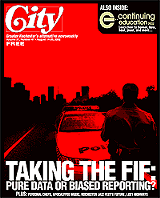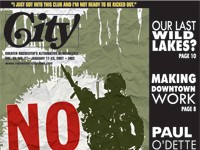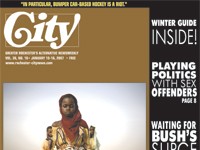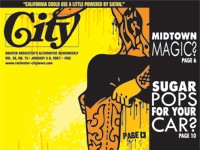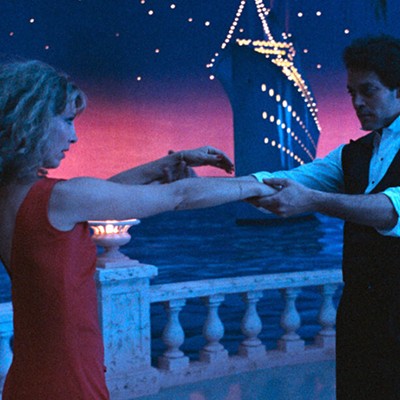[
{
"name": "500x250 Ad",
"insertPoint": "5",
"component": "15667920",
"parentWrapperClass": "",
"requiredCountToDisplay": "1"
}
]
"Field interview form." It sounds like something a reporter might pull from a back pocket. But an "FIF" is not blank or neutral. It's a controversial tool of neighborhood policing.
It's also an indicator of what people on the street are up to, and what the police are doing about it.
That's why the local chapter of the New York Civil Liberties Union took a long, hard look at FIFs and the practices surrounding them.
Specifically, the NYCLU wanted to know if RPD officers were guilty of racial profiling when they singled out people for questioning.
The study, Gathering Intelligence: Race and Field Interviews by the Police in Rochester, New York, was prepared by John Klofas, a Rochester Institute of Technology criminal justice professor. In his introduction, Klofas says similar studies have been done in the US, though most of these have looked at traffic-stop policies.
Klofas started with the US Justice Department's definition of racial profiling: "any police-initiated action that relies on race, ethnicity, or national origin rather than the behavior of the individual" in the context of actual or expected criminal activity. Then he examined all the FIFs written from June through August 2000 --- 4,773 reports on 3,798 individuals, freely provided by the RPD in redacted form --- for relevant patterns. (The number of FIFs written may be much higher than the sample suggests: In calendar 1999, for example, officers wrote up more than 26,000 FIFs, says the report.)
The fill-in-the-blank forms cover a lot of ground. There are spaces for the interviewee's name, address, date and place of birth, sex, race, ethnicity, weight, hair color, hair length, facial hair, prior criminal record and warrants outstanding (if any), nature of clothing and jewelry, "physical oddities," and "moniker/alias." Officers check off the "context" of the stop: drugs, prostitution, etc. Officers must write up an FIF following "any lawful stop [or] observations of an intelligence-related nature."
The information has legs, too. Completed FIFs go to the Crime Analysis Section, which enters the information into a searchable database. The data can be preserved indefinitely for future police investigations.
But what about race?
"None of the findings support the view that there's racial profiling done by the RPD," says Klofas. There's "no evidence of de jure or intentional discrimination," adds NYCLU counsel Scott Forsyth. For its part, the RPD reads the study's findings as an exoneration. (The RPD spokesperson did not return calls for comment.)
Nonetheless, the study does raise some flags. "In 64 percent of FIFs the race is recorded as Black; in 35 percent the race is white, [and] Asians and American Indians together account for less than 1 percent," says the study. "Hispanics" accounted for just under 9 percent. (Racial and ethnic determinations are made by the police officer.) Moreover, more than 80 percent of interviewees are male.
The numbers indicate that young Black males are interviewed more than any other group. The median age of all persons FIF'd was 28, and the most common age given was 18. "During the study period, one Black male was FIF'd for every six young Black men in the city of Rochester [while] one young white male was FIF'd for every 23 young white men in the city," says the study. "The expected annual rate of being FIF'd," the study continues, "is one out of two for young Black males and one out of 11 for young white males."
Another factor: According to the study, 80 percent of all persons FIF'd had an arrest record with the RPD. Fully 86.8 percent of the Black males had a record; for white males, the rate was 73.3 percent.
All this, as the NYCLU's Forsyth says, may point to some degree of de facto, as opposed to the de jure, discrimination. That is, social conditions and context may cause something that looks and feels like bias. John Klofas himself connects the writing of FIFs in some poor urban neighborhoods with the rate of serious crime there. The homicide rate on some Rochester streets "is 65 times what they are in society as a whole," he says.
"The question becomes, what are the other consequences when you attempt to address [these] serious problems," Klofas says. Which is not to say that de facto discrimination can be ignored. Indeed, says NYCLU attorney Forsyth, such discrimination is prohibited by federal law. (Compare how the courts have prescribed remedies for de facto school segregation over the years.) So it's far from "case closed." "We know there are problems, and we know that our mayor and police chief are willing to make positive changes," says local NYCLU director Paula Clark. "There will need to be more studies," she says. Rochester Mayor Bill Johnson agrees with one NYCLU finding. "There's a serious crime problem out there," he says. "People are keeping their kids out of their front yards for fear" of street violence. But that's where the mayor's concurrence stops. "Now that they can't find overt evidence of the problem [i.e. profiling], they criticize how the police do their job," he charges. "Police are [rightly] empowered to do investigations," Johnson says. "What I want is a sense of balance," he says. "We are constantly monitoring the police and are willing to make corrections. It [FIF policy] is under review now, and adjustments will be made, if necessary." Nor does Johnson second-guess the retention of data. "There's no evidence the police are using that information in any capricious or illegal manner," he says. "I don't pay dues to the ACLU any more," says Johnson. (The NYCLU is the state affiliate of the American Civil Liberties Union.) "In their zeal to protect our individual civil rights, they overlook the rights of others," he says. He defers to city kids who tell him they "want to live in a neighborhood where they're not going to get shot." Kaseem Morales, a 28-year-old northwest Rochester resident who's a member of the Rochester Poor People's Coalition, takes another view of police methods. "Their communication process and the way they do things is a problem," he says. They "start identifying everyone who fits the criteria" as guilty or suspicious, he says. "The police are on edge, they're looking for anything unusual, they'll be on you like a cat on a mouse," says Morales, who says he's been stopped and questioned himself. He believes the RPD should use undercover officers and passive surveillance instead of present methods. "Then you don't have to run up on people," he says. However the controversy shakes down, some Rochesterians want police activities more closely monitored. Rochester resident Claire Olson, who took part in an NYCLU workshop on the FIF report, says she and other activists have formed an as-yet-unnamed committee to push for stronger civilian review of the police. (Andrew Thomas, head of the Center for Dispute Settlement, answered that a civilian review board already exists, under the aegis of CDS.) "We want to look at what kind of data we have" on police-community interactions, says Olson. She says the killing this year of Craig Heard, a 14-year-old Black kid who allegedly tried to evade arresting officers by driving a stolen vehicle toward one of them, got the group in gear. Demands for tighter review have been on the agenda for years, and some progress has been made. Yet various "incidents" on the street continue. And just as with real estate, location seems to be key. The social contract stipulates that police attack street crime --- not so much "crime in the suites" --- with force. So cities and their concentrations of poverty become the battleground. Consider this: The NYCLU report shows that drug activity accounts for 55 percent of FIFs; no other "context" accounts for more than 10 percent. SUNY Brockport sociology professor Eileen O'Brien addresses things like this in an e-mail response. "Drug use data consistently show that whites use drugs much more than African-Americans do," she says, "but it is young African-Americans who line the jails on drug charges." O'Brien notes police can more easily make arrests in crowded, intensely surveilled urban neighborhoods. Still, she blames systemic racism, not so much individual actions. "We tend to do this finger-pointing," she says, "to find the 'bad guy' or bad police department, and I think we need to get beyond such name-calling and talk about how to restructure the system which was built on racism... I think it is important to stress that more Blacks being arrested or being in jail is not at all an indicator of more Blacks committing crimes." A relevant fact: The Children's Defense Fund says Blacks under 18 "represent 15 percent of the juvenile population but make up 26 percent of juvenile arrests" nationally. And as John Klofas says --- citing a tautology that doubly speaks the truth --- arrests are made where the police are active.
Speaking of Racial Profiling, police
Latest in Featured story
More by Jack Bradigan Spula
-
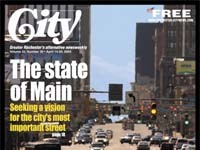
The state of Main
Apr 14, 2004 -
School improvement: the price is wrought
Apr 7, 2004 -
Hour of power
Mar 31, 2004 - More »
